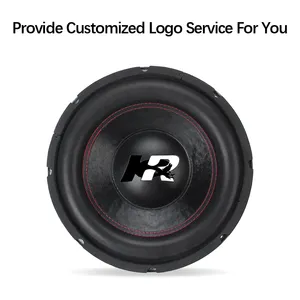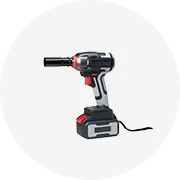Types of 21-inch Car Subwoofers
A 21-inch car subwoofer is a large, powerful speaker specifically engineered to reproduce deep bass frequencies in automotive audio systems. These premium components move significant amounts of air, creating rich, immersive low-frequency sound that transforms your in-car listening experience.
Audiophile Tip: The 21-inch size represents the pinnacle of car subwoofer technology, offering bass reproduction that smaller subwoofers simply cannot match due to their increased cone area and air displacement capabilities.
21-inch Subwoofer Driver (Standard)
In a standard 21-inch subwoofer driver, electrical signals from the amplifier energize the voice coil, generating a magnetic field that interacts with the permanent magnet structure. This interaction creates precise mechanical force, causing the subwoofer cone to move back and forth.
The resulting cone movement:
- Generates sound waves that reproduce audio signals
- Creates air pressure changes essential for low-frequency reproduction
- Delivers powerful, accurate bass response
Best for: Maximum bass output, competition audio systems, larger vehicles
21-inch Dual Voice Coil Subwoofer
A 21-inch dual voice coil subwoofer features two independent sets of voice coils, each connected to its own section of the cone and surround assembly. This sophisticated design enables:
- More precise control over cone movement
- Enhanced sound quality with improved transient response
- Increased bass impact through more effective air displacement
- Multiple wiring configuration options (series, parallel, or independent)
The dual-coil architecture efficiently handles higher power loads while delivering more balanced and accurate low-frequency reproduction.
Best for: Audiophiles, flexible system configuration, maximum power handling
| Feature | Standard 21-inch Driver | Dual Voice Coil 21-inch Driver |
|---|---|---|
| Voice Coil Configuration | Single voice coil | Dual independent voice coils |
| Wiring Options | Limited (single impedance) | Versatile (series, parallel, independent) |
| Power Handling | Good | Excellent (typically higher) |
| Bass Response | Deep and powerful | Deep, powerful, and more precise |
| Typical Applications | Standard audio upgrades | Competition systems, premium installations |
Specifications and Maintenance of 21-inch Car Subwoofers
Key Specifications to Consider
When purchasing a 21-inch car subwoofer for resale or personal use, understanding these critical specifications will help you select the right product for your target market or application:
Power Handling
Premium 21-inch subwoofers typically offer:
1,000+ watts RMS
Higher wattage ratings directly correlate with increased sound output potential.
Frequency Response
Optimal range for deep bass:
20Hz-200Hz
Lower frequency capability (20Hz vs. 40Hz) produces significantly deeper bass.
RMS vs. Peak Power
RMS: Continuous power handling
Peak: Maximum short-duration power
RMS rating is the more important specification for reliability assessment.
Impedance
Typical values:
1Ω, 2Ω, or 4Ω
Lower impedance generally produces louder output with compatible amplifiers.
| Specification | Entry-Level | Mid-Range | Competition Grade |
|---|---|---|---|
| RMS Power Handling | 800-1,200 watts | 1,200-2,000 watts | 2,000-5,000+ watts |
| Frequency Response | 30Hz-200Hz | 25Hz-200Hz | 18Hz-200Hz |
| Sensitivity | 82-86 dB | 86-90 dB | 90-95+ dB |
| Voice Coil Design | Single 2" voice coil | Single or dual 2.5" voice coils | Dual 3"+ voice coils |
| Typical Price Range | $300-$500 | $500-$900 | $900-$2,000+ |
Essential Maintenance Guidelines
Proper maintenance ensures optimal performance and extends the lifespan of 21-inch car subwoofers:
Regular Cleaning
- Gently wipe the subwoofer with a soft, lint-free cloth
- Remove dust and debris from the cone and surround
- Avoid abrasive materials or harsh chemicals
- Use compressed air for hard-to-reach areas
Frequency: Monthly or as needed
Proper Installation & Mounting
- Secure all mounting hardware to prevent vibration
- Check and retighten mounting screws periodically
- Ensure proper enclosure sealing to prevent air leaks
- Use sound dampening materials to reduce unwanted vibrations
Frequency: Quarterly inspection
Important Safety Warning: Never operate a 21-inch subwoofer beyond its rated power handling capacity. Overdriving the subwoofer can cause permanent damage to the voice coil, suspension components, and possibly your amplifier. Always match your amplifier's output to the subwoofer's specifications.
Preventing Electrical Damage
- Avoid overloading with excessive power
- Ensure amplifier settings match subwoofer specifications
- Set crossover frequencies appropriately (typically 80-100Hz)
- Check and maintain all electrical connections
Managing Sound Quality
- Avoid playing at distortion levels
- Set proper gain structure throughout the audio system
- Use a subsonic filter to eliminate harmful ultra-low frequencies
- Allow adequate break-in period (10-20 hours of play at moderate levels)
How to Choose a 21-inch Car Subwoofer
Selecting the ideal 21-inch car subwoofer requires careful consideration of multiple factors. Whether for personal use or resale, understanding these key selection criteria will help you make an informed decision:
Expert Advice: Before investing in a 21-inch subwoofer, measure your vehicle's available space carefully. These large drivers require significant installation space and proper enclosure volume to perform optimally. Always factor in not just the driver diameter, but also mounting depth and enclosure requirements.
Essential Selection Criteria
-
Power Handling Capabilities
21-inch subwoofers utilize power from amplifiers to generate sound. Consider both RMS power (continuous power handling) and peak power (maximum short-duration power). Select models with high power ratings to ensure adequate headroom and avoid distortion at high volumes. Aim for subwoofers with at least 1,000 watts RMS for optimal performance.
-
Sensitivity Rating
The sensitivity rating indicates how efficiently a subwoofer converts power into sound, measured in decibels (dB). A subwoofer with higher sensitivity (90dB+) produces louder sound with less power from the amplifier, reducing strain on your electrical system and potentially requiring less powerful amplification.
-
Frequency Response Range
A quality 21-inch subwoofer should offer a frequency response that extends to at least 25Hz for deep bass reproduction. Models with frequency response ranges of 20Hz-200Hz or lower will provide deeper, more impactful bass than those with ranges starting at 30Hz or higher.
-
Voice Coil Configuration
Consider whether single or dual voice coil designs better suit your needs. Dual voice coil (DVC) subwoofers offer greater flexibility in system configuration, allowing for multiple wiring options to optimize impedance matching with your amplifier.
-
Construction Materials
The materials used in cone, surround, and frame construction significantly affect sound quality and durability. Premium materials include:
- Cones: Polypropylene, aluminum, Kevlar, or carbon fiber
- Surrounds: Rubber, foam, or specially treated cloth
- Frames: Cast aluminum or steel for rigidity and heat dissipation
-
Enclosure Compatibility
Different subwoofer designs are optimized for specific enclosure types. Consider whether the subwoofer performs best in:
- Sealed enclosures: For tight, accurate bass with excellent transient response
- Ported enclosures: For maximum output and efficiency, especially in lower frequencies
- Bandpass enclosures: For specialized applications requiring focused frequency response
| Selection Factor | What to Look For | Why It Matters |
|---|---|---|
| Impedance | Options include 1Ω, 2Ω, or 4Ω | Must match amplifier capabilities; lower impedance typically produces higher output with compatible amplifiers |
| Xmax (Maximum Excursion) | Higher values (15mm+) | Indicates how far the cone can move; greater Xmax generally means deeper bass capability |
| Magnet Size/Weight | Larger, heavier magnets | Contributes to power handling and control; heavier magnets often indicate better quality construction |
| Mounting Depth | Compatible with available space | 21-inch subwoofers require significant mounting depth; must fit your installation location |
| Brand Reputation | Established manufacturers with good warranty | Premium subwoofers represent a significant investment; manufacturer support matters |
DIY Installation and Replacement Guide for 21-inch Car Subwoofers
Installing or replacing a 21-inch car subwoofer requires careful planning and execution. Follow this comprehensive step-by-step guide to ensure a successful installation that maximizes performance while avoiding damage to your audio system or vehicle.
Preparation: Tools and Materials
- Essential Tools: Screwdriver set, socket wrench set, wire stripper/crimper, electrical tape or heat shrink tubing, measuring tape, drill with various bits
- Required Materials: New 21-inch subwoofer, compatible amplifier (if needed), appropriate gauge wiring kit, mounting hardware, acoustic sealant, sound dampening material
- Optional Items: Protective grille, terminal cups, speaker wire, polyfill (for sealed enclosures)
Safety First: Always disconnect your vehicle's battery before beginning any audio system installation work. This prevents electrical shorts and potential damage to sensitive electronic components. Wear appropriate safety gear, including eye protection when drilling or cutting.
Installation Process
-
Disconnect Power Source
Turn off the car's audio system completely and disconnect the negative terminal of the car's battery to prevent electrical issues or short circuits during installation.
-
Access Installation Location
Remove interior panels or trunk components as needed to access the subwoofer enclosure or mounting location. Take photos before disassembly to aid in reassembly later.
-
Remove Existing Components (if applicable)
If replacing an existing subwoofer, carefully remove any grilles or covers, then unscrew and disconnect the old subwoofer. Note the existing wiring configuration before disconnection.
-
Prepare the Enclosure
Ensure the enclosure is clean and structurally sound. Apply sound dampening material to minimize unwanted vibrations. If building a new enclosure, verify it meets the manufacturer's recommended internal volume specifications.
-
Connect Wiring to New Subwoofer
Attach the speaker wires to the appropriate terminals on the new subwoofer, ensuring correct polarity (positive to positive, negative to negative). For dual voice coil subwoofers, follow the manufacturer's wiring diagram for your desired impedance configuration.
-
Mount the Subwoofer
Carefully place the subwoofer into the enclosure, aligning the mounting holes. Apply a thin bead of acoustic sealant around the mounting flange if needed to create an airtight seal. Secure with provided mounting hardware, tightening in a cross pattern.
-
Install Protective Components
If using a grille or protective cover, install it now to prevent accidental damage to the subwoofer cone. Ensure it fits securely without contacting the cone.
-
Connect to Amplifier
Run the speaker wires to your amplifier, ensuring they're properly secured and protected from heat sources and mechanical damage. Connect to the amplifier's subwoofer outputs, maintaining correct polarity.
-
Reconnect Power and Test
Reconnect the vehicle's battery terminal and power on the system at low volume. Listen for any unusual sounds and verify the subwoofer is moving correctly. Adjust crossover settings and gain levels as needed.
-
Fine-tune and Break In
Adjust amplifier settings (gain, crossover frequency, phase) for optimal performance. Allow approximately 10-20 hours of play at moderate volume to properly break in the new subwoofer before pushing it to higher power levels.
Installation Tip: For optimal performance, ensure your electrical system can handle the power demands of a 21-inch subwoofer. Consider upgrading your vehicle's alternator or adding a capacitor if you're experiencing dimming lights or voltage drops during heavy bass passages.
Frequently Asked Questions About 21-inch Car Subwoofers
Yes, 21-inch subwoofers excel at bass reproduction. Their large cone size allows them to move significant amounts of air, producing exceptionally deep and powerful low-frequency output. They are particularly effective at reproducing the lowest bass notes (below 30Hz) that smaller subwoofers struggle with. This makes them ideal for genres like electronic music, hip-hop, and organ music that feature extreme low-end content.
However, optimal performance depends on proper installation in an appropriately sized and designed enclosure. Without the right housing, even the best 21-inch subwoofer won't reach its full potential.
A 21-inch subwoofer typically requires significant power to perform optimally. Most quality 21-inch subwoofers have power handling ratings between 2,000 to 5,000 watts RMS or more, depending on the specific model and construction.
To properly power these massive drivers, you'll need:
- A high-output amplifier specifically designed for subwoofers
- Appropriate gauge power and ground wiring (typically 1/0 AWG or larger)
- Upgraded electrical system components in many cases (high-output alternator, additional batteries)
- Proper impedance matching between the subwoofer and amplifier
Underpowering a 21-inch subwoofer is actually more likely to cause damage than providing the recommended power, as it can lead to clipping and distortion.
Yes, installing 21-inch subwoofers presents significant challenges compared to smaller subwoofers. The installation difficulty stems from:
- Space requirements: These massive drivers need substantial trunk or cargo area space, often requiring custom enclosures that may significantly reduce usable vehicle storage
- Enclosure size: A properly sized enclosure for a 21-inch subwoofer can exceed 5-8 cubic feet or more, depending on the specific subwoofer's parameters
- Weight considerations: The combined weight of the subwoofer and enclosure can exceed 100 pounds, requiring structural reinforcement in many vehicles
- Electrical demands: Installation often requires upgrading the vehicle's electrical system, including larger gauge wiring, additional batteries, or alternator upgrades
For these reasons, professional installation is highly recommended unless you have significant experience with advanced car audio installations.
21-inch subwoofers offer several significant advantages that make them appealing to serious audio enthusiasts:
- Unmatched low-frequency extension: Can reproduce frequencies below 20Hz that smaller subwoofers cannot reach
- Superior sound pressure levels (SPL): Capable of producing extremely high volume levels for competition or demonstration purposes
- Improved transient response: The larger cone area allows for more controlled movement, resulting in more precise bass reproduction
- Physical impact: Creates bass you can physically feel, enhancing the listening experience for certain music genres
- Visual impact: Makes a dramatic statement in custom audio installations and show vehicles
These benefits make 21-inch subwoofers particularly well-suited for dedicated audio enthusiasts, competition systems, and demonstration vehicles where maximum bass performance is the primary goal.
No, 21-inch subwoofers cannot fit in all vehicles due to their substantial size requirements. These massive drivers are typically limited to:
- Full-size SUVs with removable third-row seating
- Full-size trucks with extended cabs or crew cabs
- Larger vans or conversion vehicles
- Vehicles specifically modified for audio competition
Installation in smaller vehicles would require significant modification, often including:
- Permanent removal of seating
- Custom fabrication work to the vehicle interior
- Structural modifications to accommodate the weight and size
- Sacrificing virtually all cargo/trunk space
Before considering a 21-inch subwoofer, carefully measure your available space and consider whether multiple smaller subwoofers might better suit your vehicle and audio goals.
The optimal enclosure type for a 21-inch subwoofer depends on your specific audio goals and the subwoofer's design parameters. The main options include:
- Sealed enclosures: Provide the most accurate bass reproduction with excellent transient response and control. They typically require less space but may not be as efficient as ported designs.
- Ported (vented) enclosures: Offer higher efficiency and output, especially at specific tuned frequencies. These enclosures are larger but can produce significantly more volume with the same input power.
- Bandpass enclosures: Create very high output within a specific frequency range, making them popular for SPL competition. However, they sacrifice some sound quality and require expert design.
For most 21-inch subwoofers, manufacturers provide specific enclosure recommendations based on extensive testing. Following these specifications will yield the best performance for your particular subwoofer model.

















































































































































































































































 浙公网安备 33010002000092号
浙公网安备 33010002000092号 浙B2-20120091-4
浙B2-20120091-4